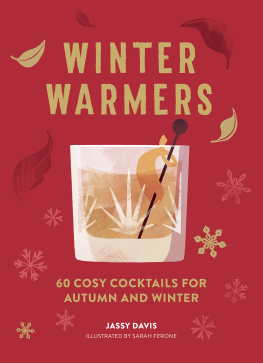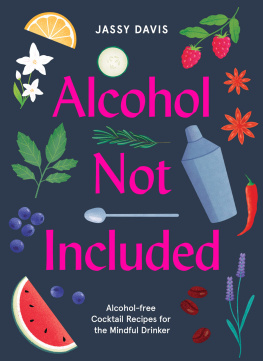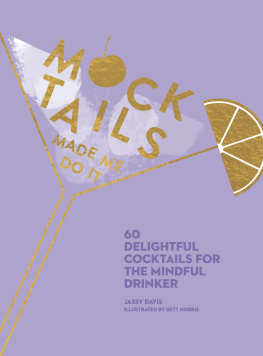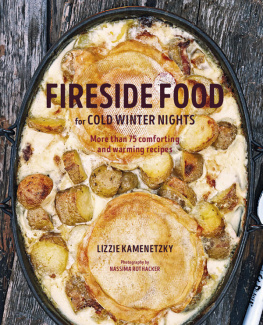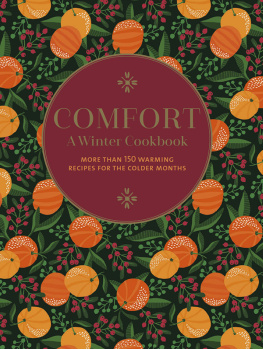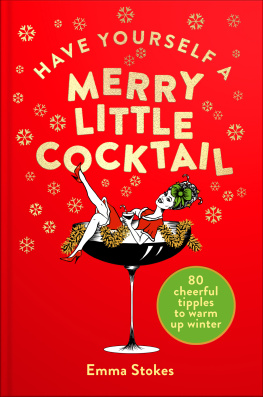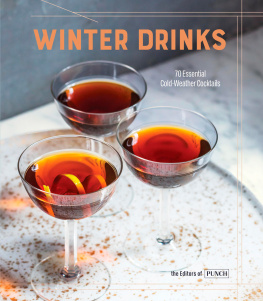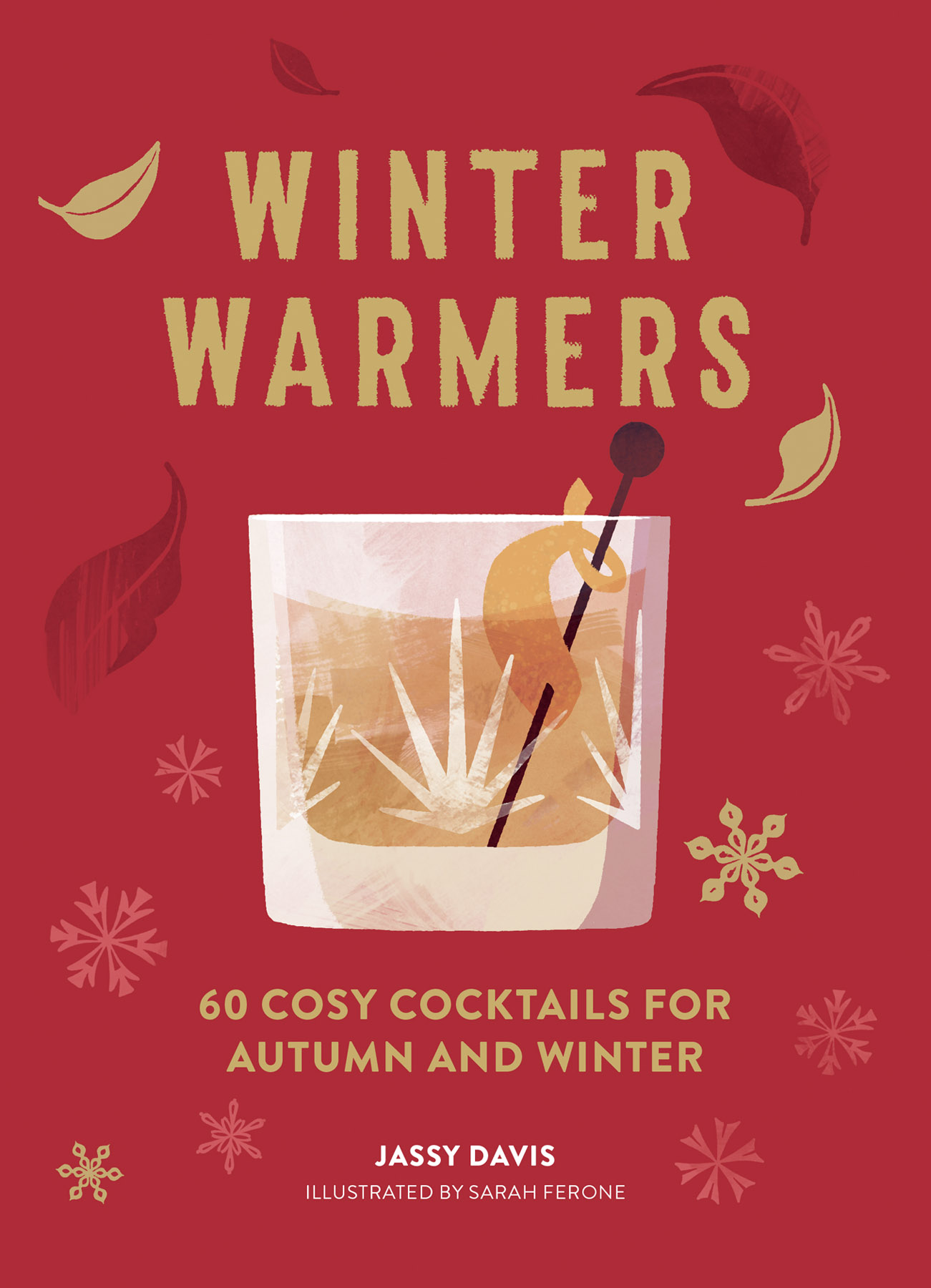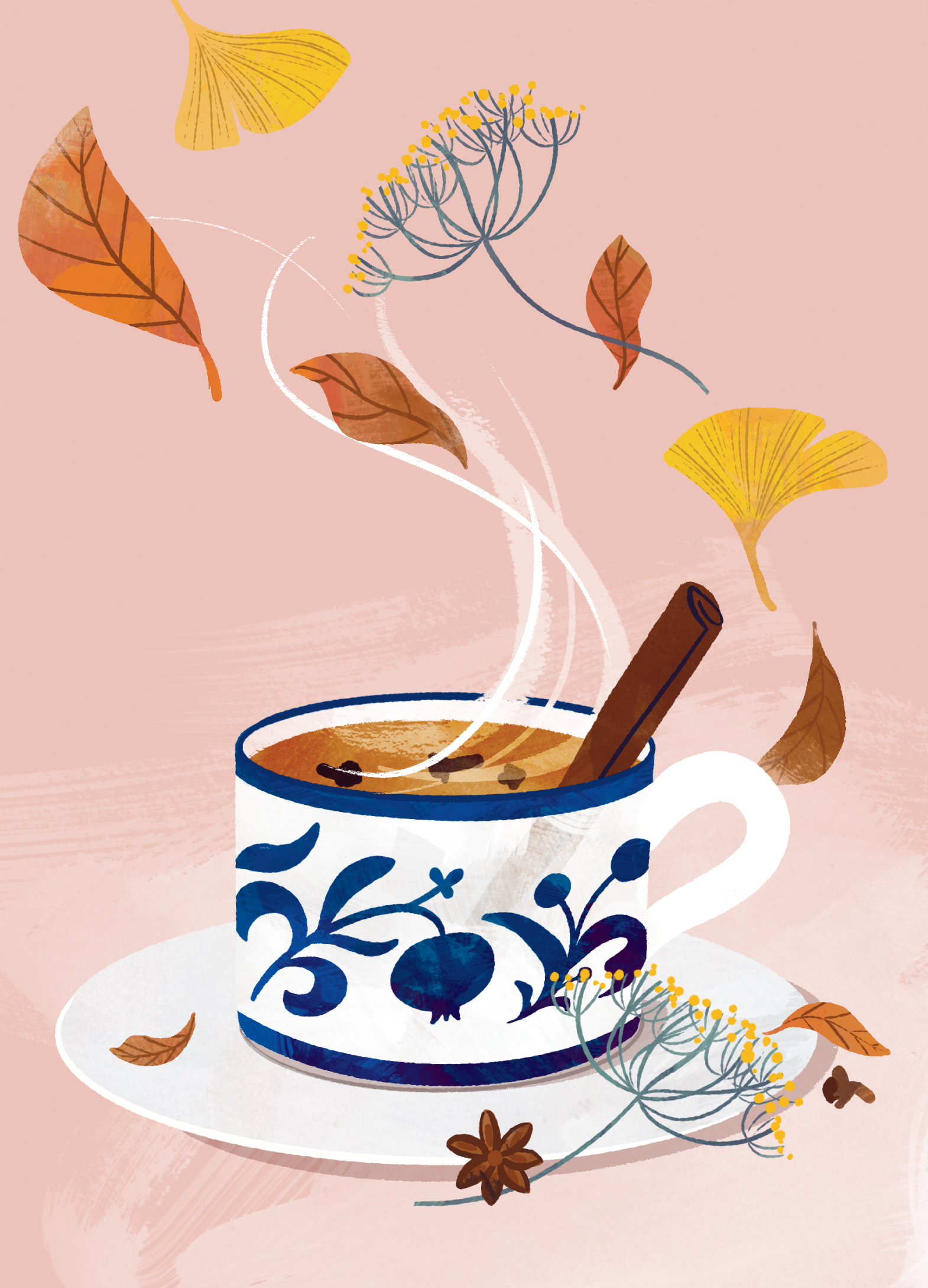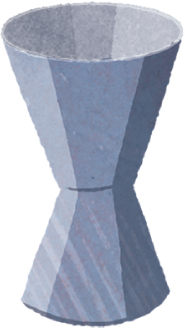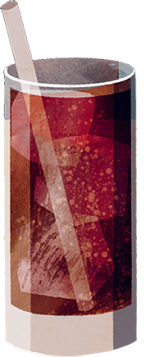Contents
Guide
Dedicated to distant friends.
And for Jordi Morrison, who taught me how to order a martini.
Contents
Cocktails dont have a season. They are a year-round delight. And yet, there is something about the shift from warmer to colder weather that makes cocktails more appealing. Perhaps its because we go out less, preferring to stay tucked up at home while the temperature drops, the rain falls and the nights grow dark. Cuddled up on the sofa or sprawled in front of a fire, a cocktail somehow feels right.
This book is devoted to those cocktails that make the colder months of the year more welcoming. There are hot drinks, including classic mulled wines, spiked hot chocolates and boozy coffees. There are also ice-cold Martinis, indulgent dessert drinks and more than a few riffs on the Negroni. For holiday parties there are punches, eggnogs and spritzes. And there are a few drinks that can only be described as very silly indeed. In the gloomiest depths of winter, when the wind bites and there seems no hope of ever seeing the sun again, mixing an over-the-top nonsense drink is cheering and delightful. I make no apologies for having fun.
If youre new to cocktail making, youll find guides on how to set up a home bar and basic cocktail-making techniques. If youve already mastered the Manhattan and can make a Sidecar blindfolded, then there are plenty of new drinks and recipes gathered from around the world to offer you some fresh inspiration. Whatever has brought you to this book, please now pull on your cosiest sweater, put some glasses in the freezer to chill and enjoy the best drinks that autumn (aka fall) and winter can provide.
You dont need a lot of specialist equipment to make cocktails at home. You can shake drinks in jam jars, stir them in water jugs and measure with teaspoons, bottle caps and that most old-fashioned of things, your eye. But if you want to get a little serious, then there are a few bar tools you can buy to help you become a cocktail king or queen.
MIXING GLASS
When youre stirring cocktails, like Manhattans and Martinis, you want a mixing glass that is wide enough to let you keep the bar spoon moving and deep enough to contain the cocktail without it spilling over the top. A mixing glass with a heavy base is more stable and wont topple over if you get a bit vigorous. Etched mixing glasses provide a bit more grip, so the glass is less likely to slip out of your hand when you pour out the drinks. A spout will also make life easier.
BAR SPOON
To go with your mixing glass, youll need a bar spoon. These are long-stemmed spoons that typically have a 2.55ml (1 teaspoon) bowl and a twisted stem. There are three types of bar spoon: American, European and Japanese. American bar spoons are the simplest, with a rubber cap on the end of the spoon and a twisted section in the middle. They are good, basic spoons if youre starting out and just want something to stir drinks with. European bar spoons often have round flat discs at the end, which can be used to muddle soft fruits. The stems are twisted all the way down, and you can use them to layer drinks by trickling the spirit down the stem. Japanese bar spoons tend to have teardrop- or pearl-shaped tips and are much longer than their American and European counterparts, making them a lot more theatrical and elegant to use. One for the showmen among you.
JIGGER
A jigger is an hourglass-shaped measurer that has two measuring bowls the standard jigger (45ml/1fl oz) and the pony (30ml/1fl oz). These are the basic measurements for cocktail making. For more specific measuring, you can buy small measuring glasses that are marked up with millimetres, fluid ounces, tablespoons and teaspoons.
SHAKER
There are three types of shaker on the market:
- The cobbler shaker is the three-part metal shaker you are most likely to see in your local homewares store. It breaks down into a shaking tin, a fitted lid with a strainer built in and a cap. Because of the integral strainer, the cobbler is perfect for beginners who dont want to buy a separate strainer.
- The French shaker comes in two pieces and is shaped like the cobbler, but without the integral strainer.
- The Boston shaker is the classic two-piece shaker consisting of a large shaking tin (often metal) and a smaller shaking tin (often glass, and called the pint glass). This shaker is a little trickier to use because you have to make sure you create a seal between the two tins before starting to shake, and it doesnt come with a strainer.
Whichever shaker you choose, pick one you feel comfortable holding and that you can shake and open without releasing a tidal wave of liquor.
HAWTHORN STRAINER
The Hawthorn strainer is a round disc with holes punched in it and a spring running around one edge. This strainer is designed to be a little smaller than most standard cocktail shakers and the spring will fit snugly inside your cocktail shakers tin, providing a bit of grip and stability when you tip the tin and pour the cocktail out. Some strainers also have ears on each side, which grip to the edge of the shaker and make it even less likely to slip. A Hawthorn strainer is essential if youre using a Boston or French shaker, and it will come in useful if youre using a cobbler shaker to make cocktails with muddled fruit. The handy integral strainers in cobbler shakers can get quickly clogged with fruit pulp, so being able to swap to a Hawthorn strainer gives you more flexibility.
MUDDLER
Muddlers are used to crush soft fruits, extract essential oils from herbs and citrus peel, crack seeds and nuts and even crush ice. When it comes to choosing a muddler the big question is: wood, plastic or steel? Wood is elegant and traditional and can take on most things, but it will need hand washing and drying. Plastic and steel come with the benefit of being dishwasher friendly.
JUICER
If youre making cocktails, youre going to be squeezing plenty of citrus fruits. Some form of lemon juicer will save you a lot of time and mess.
CHOOSE YOUR GLASSWARE
Stocking your bar cart with glasses could see you lining up anything from a few tumblers and highballs to a dozen types of glasses, each one designed for a specific cocktail. When youre picking glasses, think first about what sort of cocktails you are mostly going to make. If you mainly want to perfect your Martini, then a shelf full of flutes and margarita glasses is going to be more ornament than use. There are some specific types of glassware that can form the basis of a solid home bar, and these are my top picks.
Highball and Collins Glasses
Highball glasses are tall and skinny, while Collins glasses are just tall. The difference is minimal, so they can be used interchangeably for long drinks, such as Gin and Tonics and Moscow Mules. When youre picking glasses, avoid the temptation to go for the super-sized option. Unless you want everyone to be plastered before dinner, bigger isnt better. A 350ml (12fl oz) glass is plenty big enough.
Rocks Glasses
Next page
